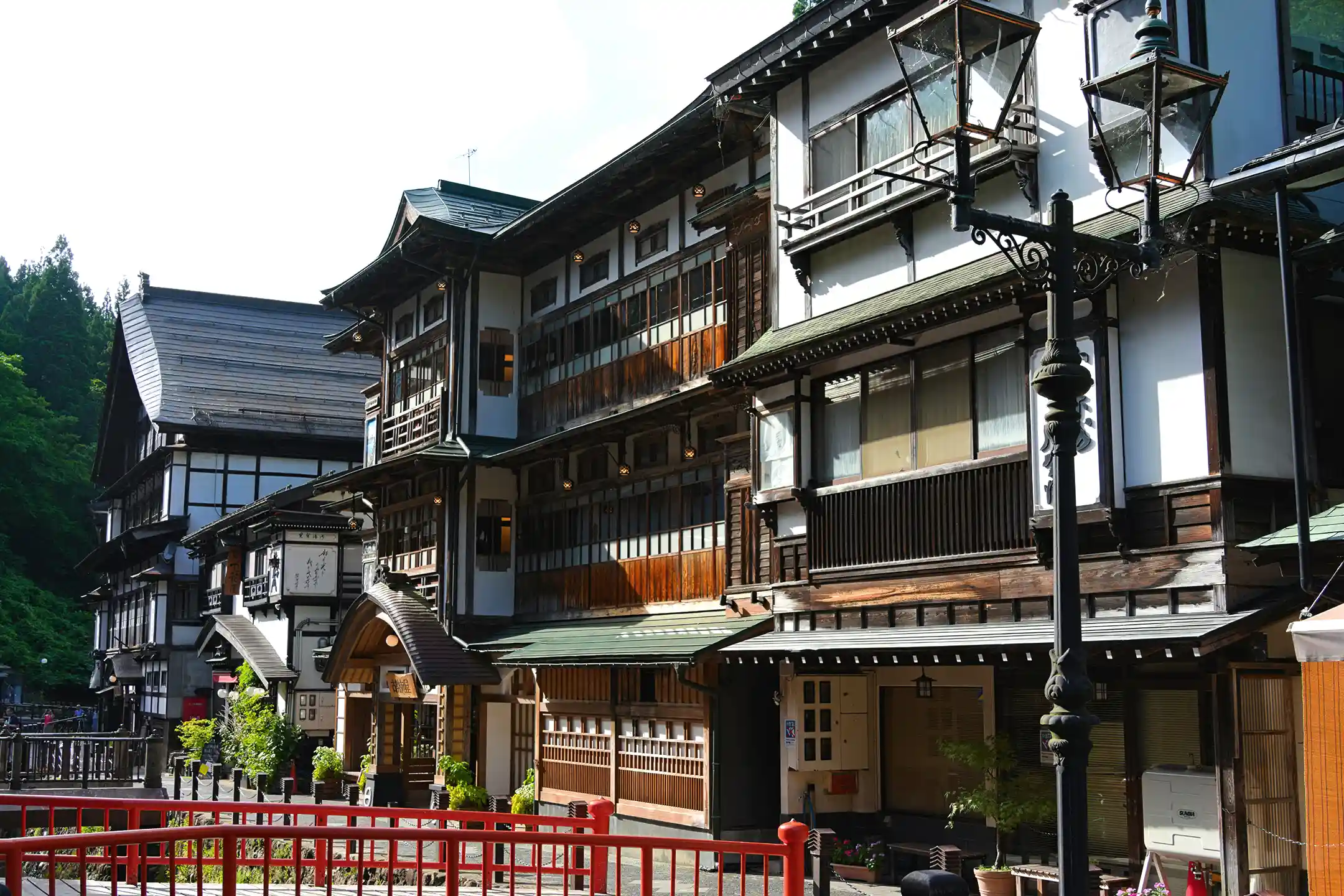Step away from Tokyo’s bustle and give yourself a one‑day wellness retreat that resets both body and mind. Hakone is an onsen resort roughly an hour and a half from the city, where you can weave together crystalline lakes, lush forests, and a loop of world‑class museums for a high‑value, deeply nourishing day.
Travel by low‑impact, eco‑friendly transport; practice mindfulness in grand nature through yoga or seated meditation; savor seasonal organic ingredients; and spark your imagination with art. If you’re planning a hakone day trip from tokyo that prioritizes wellbeing, the one‑day plan below is designed for people like you—a gentle, luxurious journey that’s kind to your body and your spirit.
What Is a Hakone Day Trip from Tokyo?
Hakone lies to the west of Tokyo, about 90–100 km from the city center. If you take the Odakyu Romancecar, you can reach Hakone‑Yumoto Station from Shinjuku in as little as about 80 minutes—around 1 hour 20 minutes on regular runs—making it ideal for a day trip (*1). Using the Shinkansen shortens it further: it’s about 30–35 minutes from Tokyo Station to Odawara Station plus a quick transfer, for a total of roughly one hour.
As for costs, return transport generally runs about ¥3,000–¥5,000 (depending on the mode). Even when you add a quality lunch and onsen admission, budgeting around ¥20,000–¥30,000 per person gives you room for an elevated experience.
In fact, estimated average daily spend per traveler in the Fuji‑Hakone‑Izu National Park area is about ¥15,000, with even indulgent plans coming in around ¥30,000 (*2). This itinerary is crafted for travelers with high social standing and refined taste—people who are wellness‑minded and place real value on sustainability.
If you’re a busy adult seeking equilibrium, a hakone day trip from tokyo is a rare chance to access deep relaxation and cultural stimulation in a short window. Even if you’re new to Japanese culture, many sites offer English support and guiding, so you can relax and enjoy. Between the demands of urban life, treat yourself to a journey that brings both “healing” and “learning”—that’s the essence of a Tokyo‑to‑Hakone one‑day wellness retreat.
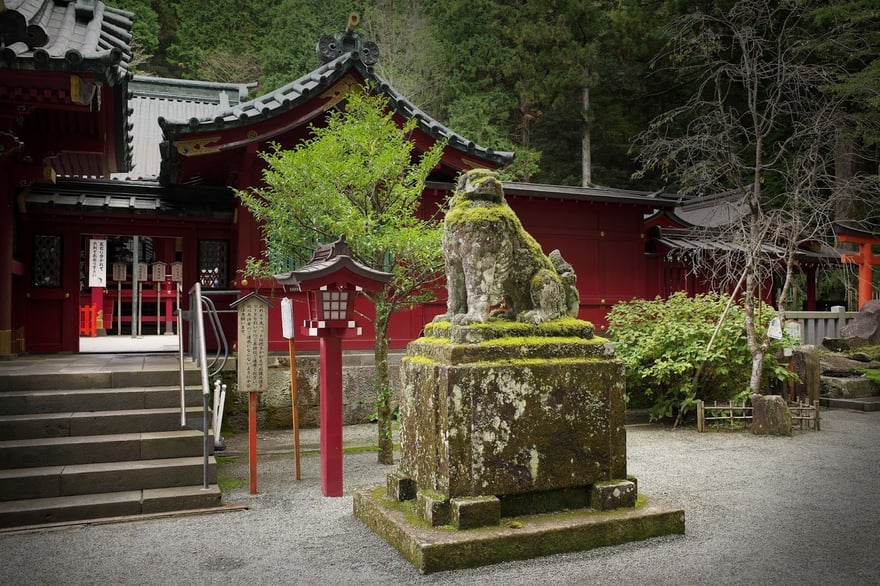
Five Reasons This Trip Stands Out
Why do wellness‑focused adults choose a Hakone day trip? Five reasons: First, privacy. Thanks to excellent public transit, you can move smoothly as an independent traveler. You won’t be swept along with a large tour group; instead, you set the pace and keep your day serene.
Second, sustainability. By using rail—Odakyu’s Romancecar, the Hakone Tozan Railway—you’ll cut your CO₂ emissions dramatically: rail travel emits roughly one‑seventh of the CO₂ of private cars, reducing your footprint by a wide margin (*3). Hakone Town also promotes EV adoption, advancing decarbonization in harmony with tourism (*4).
Third, depth through expert guides. If you like, you can arrange an officially recognized local guide via the Hakone DMO. You’ll get English‑language guiding and insightful interpretation of nature and culture. Formal shrine visits, curator‑style pointers inside museums—these expert touches elevate your day.
Fourth, a wealth of cultural experiences. Beyond soaking in hot springs, you can try zazen (seated meditation) at a Zen temple, savor matcha in a tearoom, experience chopstick making, or visit a yosegi marquetry workshop. Even in a single day, you’ll access programs that connect you with Japan’s living traditions.
Finally, time optimization. Start early from Tokyo and return in the evening: Hakone’s integrated network of trains, buses, and ropeways lets you stitch multiple activities into a single efficient loop. You truly get a “journey where travel time becomes healing time.”
Sustainable & Comfortable Access Plans
There are several ways to reach Hakone from Tokyo, each with its own profile for travel time, environmental impact, and comfort. For the most eco‑friendly and comfortable, rail is your best bet.
The Odakyu Romancecar runs from Shinjuku to Hakone‑Yumoto with no transfers in as little as 75 minutes (about 85 minutes on regular runs) and costs around ¥2,400 one‑way (*1). All seats are reserved, with generous reclining seats and soothing window views of green. The panoramic observation seats in the lead car are especially coveted.
If you take the Tokaido Shinkansen, it’s about 35 minutes from Tokyo Station to Odawara, then a connection on the mountain railway to Hakone‑Yumoto—about one hour total. The Shinkansen is a bit pricier (roughly ¥3,600 one‑way) but wins on speed. Environmentally, both rail options generate only a fraction of the CO₂ of driving, making them sound sustainable choices.
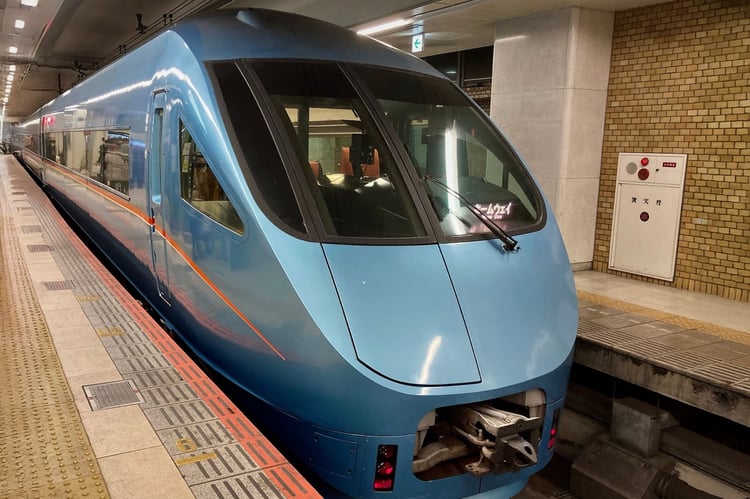
Renting a car is also possible: via the Metropolitan Expressway and the Odawara‑Atsugi Road it’s about 1 hour 30 minutes in good traffic (2+ hours if congested). Expect roughly ¥2,000 one‑way in tolls and fuel. A car grants private space and baggage flexibility, but if you’re mindful of impact, opt for a hybrid or an EV rental.
On the ground, Hakone is strengthening EV car‑share services and charging infrastructure, so it’s increasingly practical to do an EV‑powered scenic drive. Highway buses are another option: Odakyu’s direct bus from Shinjuku reaches Togendai in about 1 hour 55 minutes for roughly ¥2,300 one‑way. You can sit back and admire views of Mt. Fuji and the Hakone range, though buses are subject to road congestion.
In short: Rail = fast and eco‑friendly; EV = privacy plus eco‑benefits; Bus = simple and reasonably priced. Choose what fits your travel style best.
Environmental Impact & Comfort: Romancecar, Shinkansen, and EVs
On comfort, the Romancecar offers large reclining seats and, depending on season, in‑car sales—so you can truly unwind. The “observation seats” at the very front provide a driver’s‑eye panorama to kick off your mountain journey in style.
On the Shinkansen, reserved or Green Car seats elevate the experience further, and the time savings are significant. As noted, rail is exceptionally low‑carbon: according to the Japan Private Railway Association, CO₂ emissions per passenger‑kilometer are about one‑seventh those of private cars and roughly one‑fifth those of aircraft—dramatically lower across the board (*1).
Driving does bring exhaust and traffic issues, but modern EVs produce zero tailpipe emissions, keeping impact low. Hakone Town positions itself as an “environmentally advanced” destination and is rolling out EV car sharing for visitors and chargers at accommodations. EVs are wonderfully quiet and comfortable—an excellent match for a wellness‑focused journey.
For pure relaxation—no driving stress and lots of scenery—Romancecar and Shinkansen have the edge. For private space and the freedom to detour, EVs win. In any case, a little intention goes a long way: play calming music, use a travel‑size aromatherapy mist, and let the journey itself become part of your restorative time.
Treat your choice of transport as part of your wellbeing plan—striking a balance between environmental care and your own comfort.
(*1 Reference: Japan Private Railway Association “Railway Q&A.” Comparing CO₂ emissions of private passenger cars and rail. https://www.mintetsu.or.jp/knowledge/faq/25.html)
Timeline by Transport & How to Use Mobile Tickets
With limited hours, the keys to maximizing Hakone are a realistic timeline and smart digital tools. For example, if you take an early Romancecar around 7:00 a.m. from Shinjuku, you’ll arrive at Hakone‑Yumoto just after 8:30 a.m. An early start gives you generous time on the ground.
Even with a transfer, a Shinkansen + mountain railway combo gets you into Hakone in the 8:00 a.m. hour if you board a 7:00 a.m. Kodama from Tokyo Station. Timetables vary by season and day of the week, so check the latest on official sites and route apps as you build a calm, unrushed schedule.
Leverage mobile tickets wherever possible. With Odakyu’s online “e‑Romancecar,” you can reserve specific seats up to one month in advance, and there’s even a limited online discount of ¥50 off the Limited Express surcharge (*1). Reserve and pay on your phone, then show the digital ticket—no ticket machines, no lines. Likewise, JR East’s “Ekinet” or JR Central’s “Smart EX” enables ticketless Shinkansen boarding. For local travel in Hakone, preload an IC card (Suica/PASMO, etc.) so getting on and off buses or cable cars is swift and smooth.
You can also purchase the Hakone Freepass on your smartphone and use a QR code to pass through gates—an easy digital roaming ticket. With these tools, you skip paper ticket hassles and enjoy a cashless, comfortable day. Think: phone reservations for the Romancecar in and out; contactless IC taps for local rides—use technology to keep your movements stress‑free.
Time management helps too: know departure times for key legs, check the next train as soon as you reach a transfer point, and give yourself micro‑breaks (even five minutes for tea) when you can. Set app notifications to ping you a few minutes before departures. The journey is part of the retreat—optimize, but leave room to breathe so you can feel the restorative mood from the moment you set out.
(*1 Reference: skyticket “Compare fares and times for Tokyo–Hakone by Romancecar, Rapid, Shinkansen, and Bus.” Internet‑only discount on Limited Express surcharge. https://skyticket.jp/guide/518898/)
Model Itinerary: A Full Day, Hour by Hour
From here, let’s walk through a sample day, morning to night—a one‑day plan that feels far richer than “just a day trip.” Time allocations are guidelines, with intentional “white space” to deepen your wellness gains.
From the train ride to the last tea, every moment is designed as time for healing and insight. We’ll start with morning mindfulness, then move through forest bathing, a lake cruise, cedar‑avenue hiking, onsen and spa, an organic lunch, and an art‑filled afternoon.
Feel free to swap the order or choose alternatives based on season and weather. Check forecasts and local conditions, and craft your own perfect day. This hour‑by‑hour plan is what makes a hakone day trip from tokyo feel like a true one‑day retreat.
Morning Mindfulness (Zazen & Lakeside Yoga)
6:30 a.m. – Morning zazen at a Zen temple: Begin with a mindfulness practice that settles the mind. At Josenji, a centuries‑old temple about 20 minutes by car from Hakone‑Yumoto, early‑morning meditation sessions are held (reservation required). In the still air of dawn, sit for twenty minutes under the guidance of the head priest. As your focus deepens in the main hall, stray thoughts drop away and you enter the day with bright, clear awareness. In Hakone, practicing in the morning helps you avoid peak visitor hours, enhancing quiet and concentration (*1).
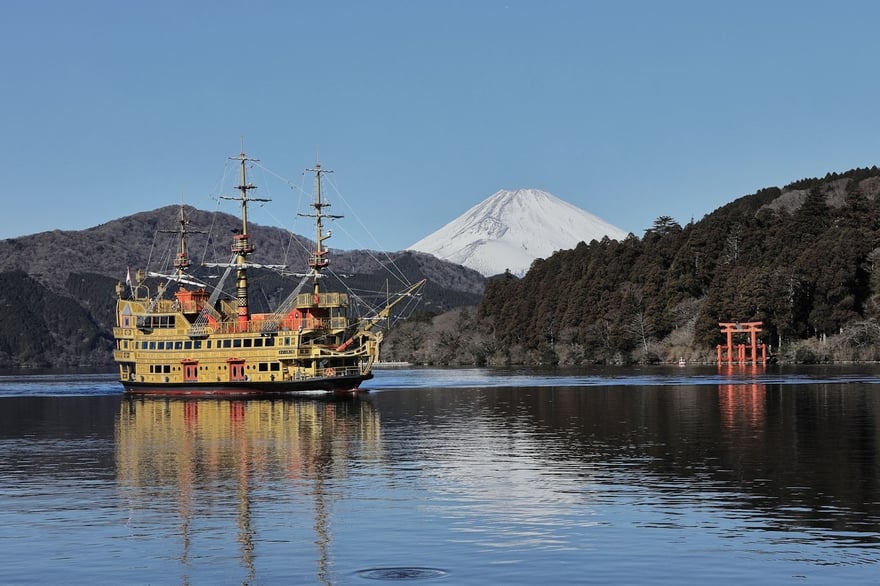
A “genuine” Zen experience at a 400‑plus‑year‑old Soto Zen temple is increasingly popular with overseas travelers and offers you a rare encounter with authentic zazen (*1). Afterward, enjoy the temple’s handmade vegan sweets with matcha—an unmistakable Josenji treat. Gentle, plant‑based confections close your reflective hour on a graceful note.
8:00 a.m. – Lakeside yoga: Move to the shores of Lake Ashi for an outdoor morning yoga session facing the water. In summer, group classes are held on the lakeside lawns and are open to anyone with a booking. Moving your body in the cool morning air—dappled sunlight, birdsong, and the hush of a nearby waterfall—feels extraordinary. Hakone Kowakien Ten‑yu also offers garden yoga, where guests have said “being wrapped in sun‑flecked green and the sound of falling water felt cleansing for the heart” (*2).
Instructors focus on accessible postures, so even if you’re a beginner or not very flexible, you’ll be fine. Mats are often available on site, but bring comfortable clothing and a light layer. In case of rain, sessions may move indoors or pivot to breathwork; treat that as a different kind of gift and go with the flow. After your morning practice, stop by a café for a light breakfast or hydration, then get ready for more time in nature.
Harmonizing with Nature: Forest Bathing, Lake Cruise, and a Cedar‑Avenue Walk
9:30 a.m. – Forest bathing in primeval woods: With your body softened by yoga, immerse yourself in Hakone’s forest for shinrin‑yoku. Around the Visitor Center by Lake Ashi you’ll find the “Wild Bird Forest” footpaths, gentle slopes where you can feel the forest’s breath with your whole being. Forest bathing is said to reduce stress hormones and balance the autonomic nervous system, releasing mental and physical tension (*1).
Hakone Navi notes that forest bathing helps regulate hormone balance; surrounded by green and negative ions, it’s a natural way to shed daily stress (*1). Academic studies also report that shinrin‑yoku reduces stress‑related hormones and increases parasympathetic activity, lowering blood pressure and heart rate (*2). With this evidence and more, Hakone draws international visitors seeking “forest therapy.” Inhale slowly, notice the scent of wood, tune in to birdsong. Over 200 bird species are said to inhabit Hakone’s diverse ecosystems, offering seasonal encounters throughout the year (*3).
You might spot bush warblers or varied tits in early summer, and migratory flocks in autumn—bring binoculars if you like. After about 30 minutes of walking, take a breather and head to your next stop.
10:30 a.m. – Cruise on Lake Ashi: Board a sightseeing boat and take in the scenery from the water. Hakone’s iconic “pirate ship” vessels—with their colorful silhouettes—lend a playful flourish to your day. From the lake, you may glimpse the majestic outline of Mt. Fuji, and the breeze across the water is wonderfully refreshing.
Boats run between Moto‑Hakone and Togendai in about 30 minutes, immersing you in the interplay of lake and mountains. Step out on deck, breathe deeply, and let the ring of water and forest make you feel part of the landscape. The whimsical design of the pirate ships adds a touch of fun; many visitors say “the lake dotted with pirate ships makes you feel positively elegant” (*4).
Onboard audio guides (multilingual) explain the lake and nearby historic sites, so you’re supported even without prior knowledge of Japanese history. It’s only about half an hour, but this little voyage stays with you.
11:30 a.m. – Hike the cedar‑lined Old Tokaido: After disembarking, head from near Togendai toward the stone‑paved Hakone Old Highway. The cedar avenue leading from the Hakone Checkpoint runs for about 500 meters, a historic road lined with more than 400 towering cedars—some over 350 years old—forming a living green tunnel (*5).
As you stroll the cool, shaded path, shafts of light filter through and the atmosphere feels almost dreamlike. Each step on the uneven stones carries the weight of history; you can imagine the footsteps of travelers long ago. Phytoncides—aromatic compounds released by the tall cedars—are believed to be profoundly relaxing and are a focus of forest therapy research.
Benches along the way invite short meditations, with birdsong as your soundtrack. Notice seasonal wildflowers, touch the mossy bark, and engage all five senses. After a 20–30 minute walk, you’ll have moved just enough to feel pleasantly alive. Pause at a lakeside teahouse for chilled local barley tea as you reset for onsen and lunch. After a morning tuned to nature’s rhythm, you’ll already feel cleared and bright inside.
Onsen, Spa & Aromatherapy for a Deep Detox
12:30 p.m. – Day‑use hot springs: After an active morning, it’s time for a soak. Hakone has many day‑use onsen, and for this model plan you’ll choose one with open‑air baths embraced by nature and robust spa facilities.
Near Lake Ashi, “Ryuguden Honkan” is known for open‑air baths with breathtaking views of Mt. Fuji and the lake—plus on‑site dining and massage services (*1). The renewed baths feel spacious and fresh; you can savor grand scenery while bathing in free‑flowing spring water. Staff hospitality is excellent, and private rest rooms help you linger with a sense of seclusion (*1).
Closer to Hakone‑Yumoto, “Yunosato Okada” offers multiple types of baths and extensive amenities—dining, Thai‑style massage, and more—so you can happily spend a whole day in one place (*2). Imagine soaking in a large rock bath as you watch a waterfall, then stretching out on tatami in a lounge—this is your detox time, when fatigue dissolves from the body.
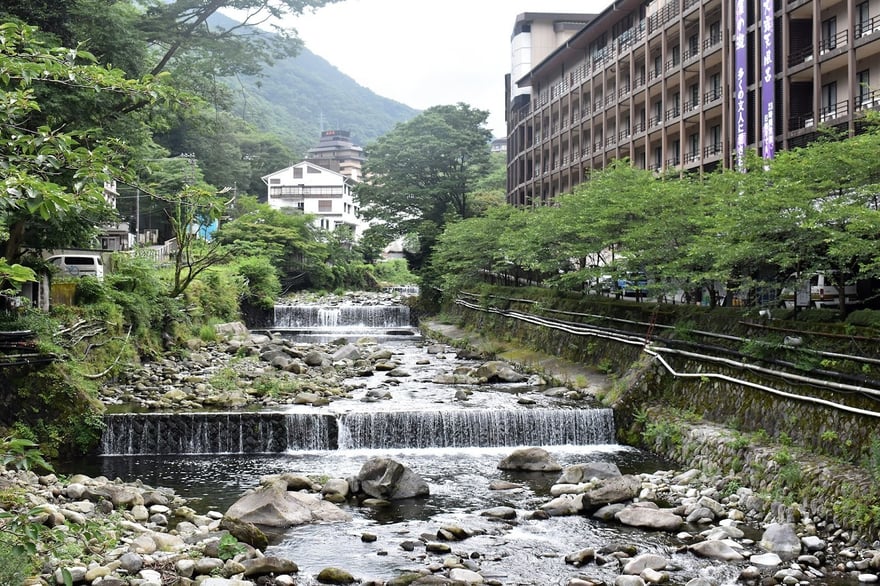
After bathing, consider an aromatherapy oil treatment. At “Hakone Yuryo,” for instance, the in‑house salon provides body care attuned to your condition, amplifying the onsen effect (*3). With personalized techniques, such as lymphatic treatments and reflexology, practitioners help melt away tension—and after the bath’s warmth has improved circulation, you’ll slip even more easily into relaxation (*3).
These aromatherapy sessions promote perspiration and cleansing—powerful for detox. When you combine a thorough warm‑through in mineral‑rich waters with expert hands, stagnation clears and you regain energy for the afternoon. It’s a spa experience so complete you’d never guess it’s just a day trip. Once you’re refreshed and dressed, it’s time for a lunch that your body will love.
Organic, Locally Sourced Lunch Spots
2:00 p.m. – Vegetable kaiseki lunch: After recalibrating in the hot springs, polish your glow from the inside with a wholesome local lunch. Hakone has an abundance of highland vegetables and tofu dishes made with pure spring water—ideal for enjoying flavors that honor the land.
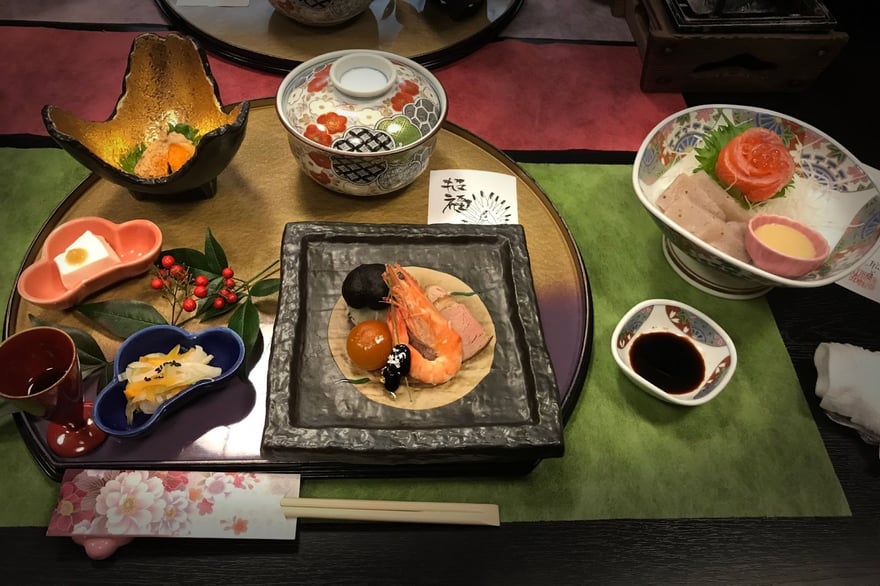
A favorite is the long‑established Shikajaya near Hakone‑Yumoto, where yuba and tofu‑based kaiseki cuisine is the specialty, with options that limit animal‑derived ingredients. If you’re vegetarian or vegan, mention this when booking; they can prepare a special menu centered on tofu and mountain yam (*1). Think seasonal vegetable tempura, soy‑milk hotpot, and steamed yam—delicate plates that are gentle on the body and beautiful to behold, letting you taste the season with all five senses.
Private tatami rooms allow you to dine leisurely in comfort. Sashimi‑style yuba made with Hakone’s famed spring water is exceptional; the natural sweetness of soy really shines. For dessert, you might find light options like local yuzu sorbet or seasonal fruit kanten jelly. You’ll refuel without heaviness, leaving you buoyant for the afternoon.
An Afternoon of Art to Recharge Your Imagination
3:30 p.m. – Strolling an open‑air sculpture park: When lunch ends, enjoy art with an unhurried mind. Hakone’s Open‑Air Museum is a standout—about 70,000 square meters of gardens with close to 120 modern sculptures from Japan and abroad, harmoniously placed within nature (*1). There’s also a Picasso Pavilion and interactive pieces that spark curiosity for adults and children alike.
As you wander, pause by a piece you connect with, breathe, and feel its form with your senses. Watching art nestled in green, you may sense yourself becoming part of the landscape—an “art meditation” that clears the mind and stirs creative energy.
5:00 p.m. – Quiet time in a tearoom: After the museum, stop at Shinwatei, the tearoom within the Hakone Museum of Art in Gora Park. Here you can enjoy matcha and a seasonal wagashi at table seating while looking out over a moss garden (*2). The refined sweetness of the confection and the fine matcha tune your inner composure.
Because it’s table seating rather than a tatami room, you can experience tea culture comfortably if sitting on the floor isn’t for you. The host will guide you in whisking and etiquette, so first‑timers needn’t worry. Quietly sipping matcha becomes a brief meditation: rest your eyes on the velvety moss, attend to the host’s movements, notice your own breath—a clear calm emerges. Touching the spirit of wabi‑sabi enriches the day’s emotional arc, merging the inspiration of art with the stillness of tea for a beautiful afterglow.
Costs & Best Seasons
To wrap up, here’s practical guidance for planning and execution: a budget outline, ideal timing, a packing checklist, and a quick primer on payments and tipping in Japan. Prepare the details now so you can focus entirely on your wellness experience on the day. If you’re visiting from overseas, customs like “no tipping” can be surprising—helpful to know in advance. Let’s go step by step.
Travel Budget & Cost Breakdown
Budget guide: For a high‑value day trip like this, estimate about ¥30,000–¥45,000 per person. A typical breakdown: round‑trip transport ¥5,000–¥8,000 (including Romancecar surcharge or premium seats), activities and admissions around ¥5,000 (museum, tearoom, yoga class, etc.), onsen & spa ¥3,000–¥8,000, lunch and café about ¥3,000, and allow up to ¥10,000 for optional guide fees and souvenirs.
This will vary, of course. Relying on public transport can reduce costs; hiring a private guide may add ¥20,000–¥30,000. A representative model—Romancecar round trip + onsen soak + aromatherapy massage + lunch & café + museum admission—comes out around ¥25,000. Area data for the Fuji‑Hakone region report about ¥15,000/day for mid‑range travel and about ¥30,000/day for luxury styles (*1).
By that measure, this plan sits between mid and high—but given how comprehensive it is, including restorative transit, the value feels well‑justified.
Luxury variations: Even within a day trip, you can dial up the luxury. A private hire car (EV) makes the journey door‑to‑door comfortable at around ¥100,000; adding a private‑room day‑use plan at a top ryokan can push an individual cost above ¥50,000. Conversely, smart choices can pare expenses: museum multi‑passes or combination tickets often shave off a few hundred to a thousand yen; more hikes and park time can be free. Decide where to splurge and where to save according to what matters most to you.
The goal is to design for fulfillment that outweighs the spend. Money invested in experiences that nourish body and mind is never wasted. By that standard, this trip offers excellent cost‑performance, with genuinely high wellness returns.
Best Season & Weather Tips
Hakone’s climate: Because Hakone sits at higher elevations, seasonal temperature swings are pronounced. Summer (July–August) averages around 24°C and can be humid, but it’s still cooler than central Tokyo and popular as a summer retreat. Winter (January–February) averages 3–5°C and occasionally sees snowfall (*1).
Spring and autumn bring pleasant daytime temperatures but sharp chills morning and evening, so bring warm layers. June is the rainy season with the highest precipitation—great for misty forests, but pack proper rainwear (*1). For wellness‑focused travel, choose temperate periods when forests and gardens are at their most expressive.
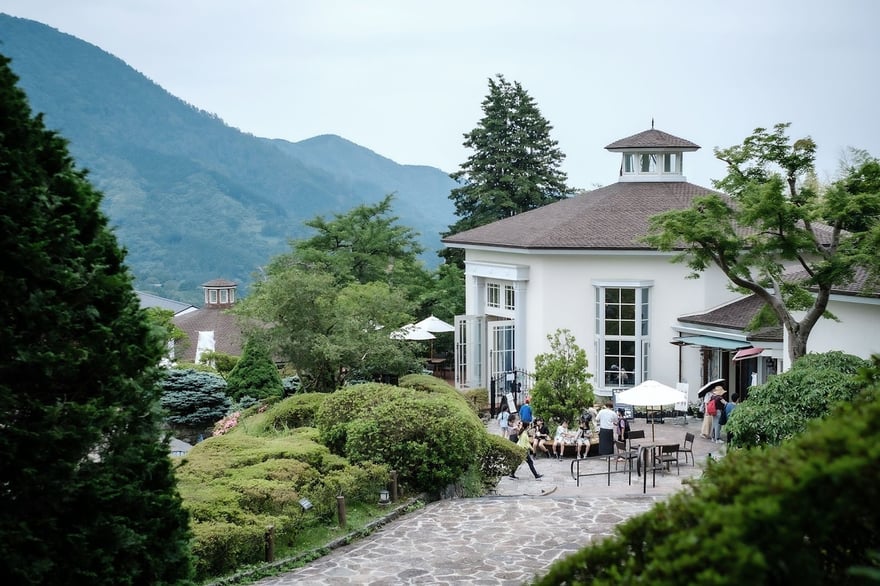
Best windows: Your sweet spots are mid‑May to early June and late September to early October (*2). In late spring or early autumn, temperatures sit around 15–20°C—comfortable—and crowds are lighter (excluding major holidays and the peak of fall foliage). In late May, fresh greens and azaleas are glorious, and you can enjoy forest bathing and outdoor yoga in clear air before the rains. Late September to early October often brings stable weather after typhoon season and serene pre‑foliage forests.
When to avoid: Golden Week (late April–early May), the Obon period (mid‑August), and peak autumn weekends (early–mid November). Traffic and crowding can be intense, especially around Hakone‑Yumoto Station—not ideal if you seek quiet. Weekdays help you dodge the crush.
Winter rewards include crisp air and stunning views of Mt. Fuji, but be ready for icy roads and cold—think serious insulation and grippy shoes. Overall, aim for times when you can feel the season’s character and the visitor flow is calmer. For clothing: layer in spring/fall; in summer, choose breathable fabrics plus sun protection; in winter, add real warmth and slip‑resistant footwear. Match your kit to the season.
Wellbeing Habits You Can Continue After the Trip
Make your reset in Hakone more than a one‑off: carry it home into daily life. Here are practical self‑care ideas to preserve—and even build on—the balance you reclaimed. From a breathing practice you can do in transit, to a one‑week post‑trip plan, to online Zen and yoga you can follow anywhere—these are simple steps you can start tomorrow. Keep the wellness momentum and craft days that feel good from the inside.
A Breathing Practice for Travel Time: 4–4–6–2
Relax with the “4–4–6–2” method: On your ride home—or during any long flight—you can practice this seated breathing technique anywhere. Inhale for a count of four, hold for four, exhale slowly for six, then pause for two.
Inhale through the nose and exhale softly through the mouth. Emphasizing a longer exhale activates the parasympathetic nervous system and promotes relaxation (*1). Variations of the “inhale 4 : hold 4 : exhale 6 : hold 2” ratio appear in several Asian traditions and are known for quickly easing anger, anxiety, and impulsive thinking (*2).
It’s simple yet powerful. Researcher Dr. Richard Brown in the U.S., for example, notes that 4–4–6–2 breathing can steady the mind during intense stress or panic and even when you’re caught in gloomy loops (*2).
How‑to: Sit tall. Inhale through your nose for 4 seconds, noticing your belly expand. Hold for 4, imagining oxygen moving through you. Purse your lips and exhale for a smooth 6 seconds, emptying completely. Finally, pause for 2 seconds with empty lungs. A few cycles are enough to slow your heart rate and clear mental fog. The long exhale stimulates the vagus nerve and shifts your body into a restorative mode (*1).
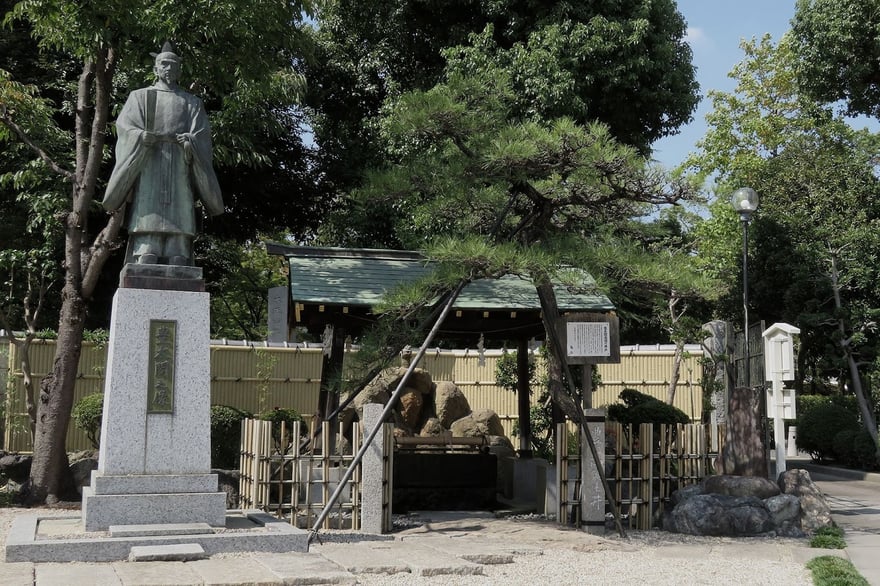
Because it’s quiet and discreet, you can use it on trains and planes, when you’re tired, on a sleepless flight, or before work when you want focus. Once you’re used to it, count silently (“inhale 2, 3, 4…”) to keep rhythm. If your mind wanders, return attention to the breath. On long flights, try a few minutes after takeoff or before sleep; it can even help reduce the risk of economy‑class syndrome. If you’re uneasy with flying, it helps ease nerves.
4–4–6–2 is the ultimate anytime self‑care. Build it into daily life after your trip so you can maintain yourself—anytime, anywhere.
In Closing
A Hakone wellness retreat as a day trip from Tokyo distills healing and learning into one luxurious, memorable day. You breathe deeply in nature, detox in hot springs, and feed your heart with food and art—exactly the reset so many of us need right now. By the time you return to Tokyo, you’ll feel as if you’ve taken several days off: content, centered, and renewed.
I hope the plan and practices here help elevate your everyday wellbeing. Go see Hakone for yourself—feel the land’s restorative power and the warmth of Japanese hospitality. Then bring those essences back home, weaving them into your routines to enrich your life. May your next journey lead you toward lasting health and happiness, in body and mind.
Author Bio

Natsumi Ikeshita
Experienced in B2B SaaS marketing and “omotenashi,” Natsumi directs media operations with a focus on hospitality and cultural storytelling. Her global experience and marketing skills bring fresh value to Bespoke Discovery’s content.


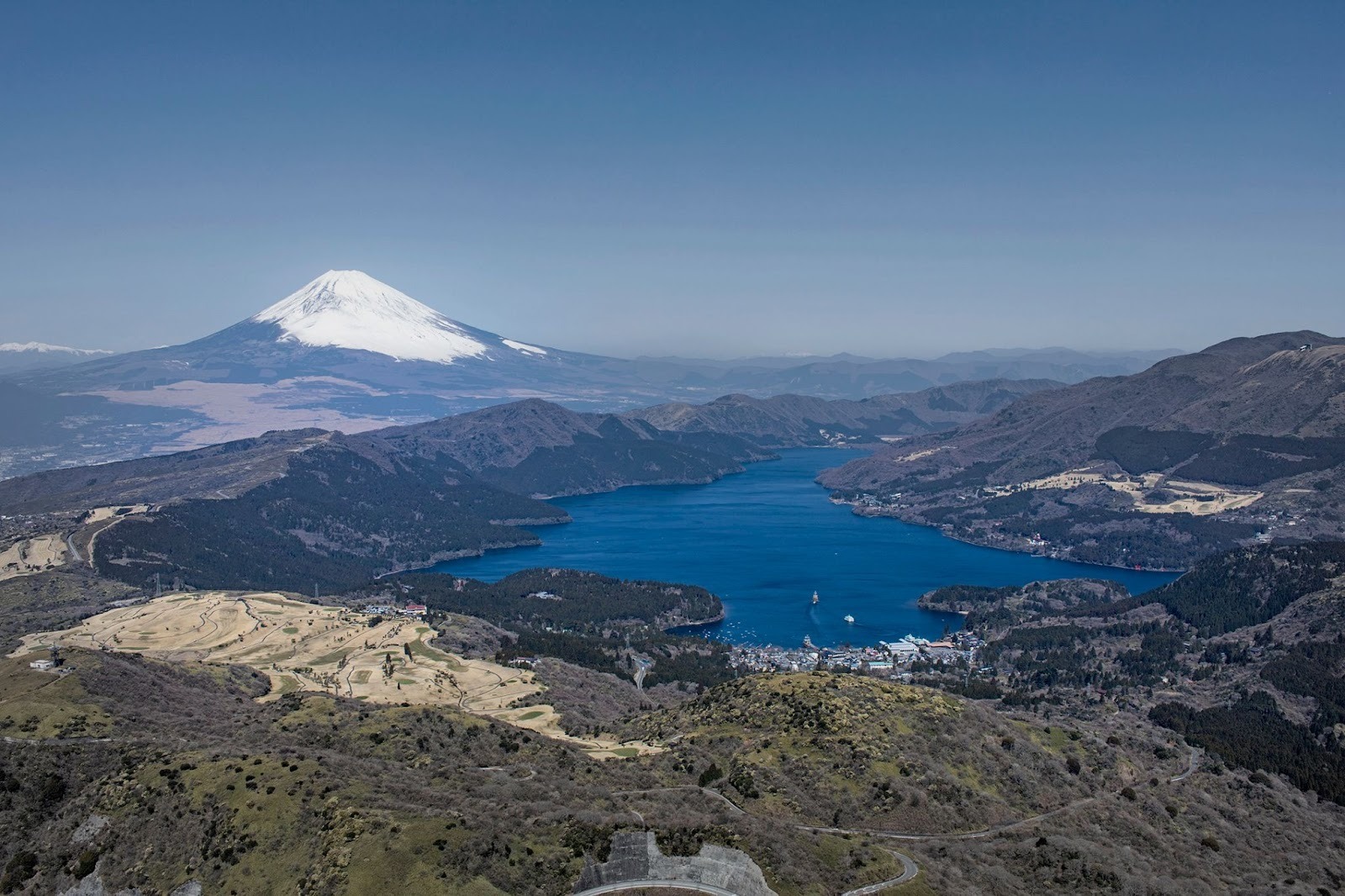
.webp)

